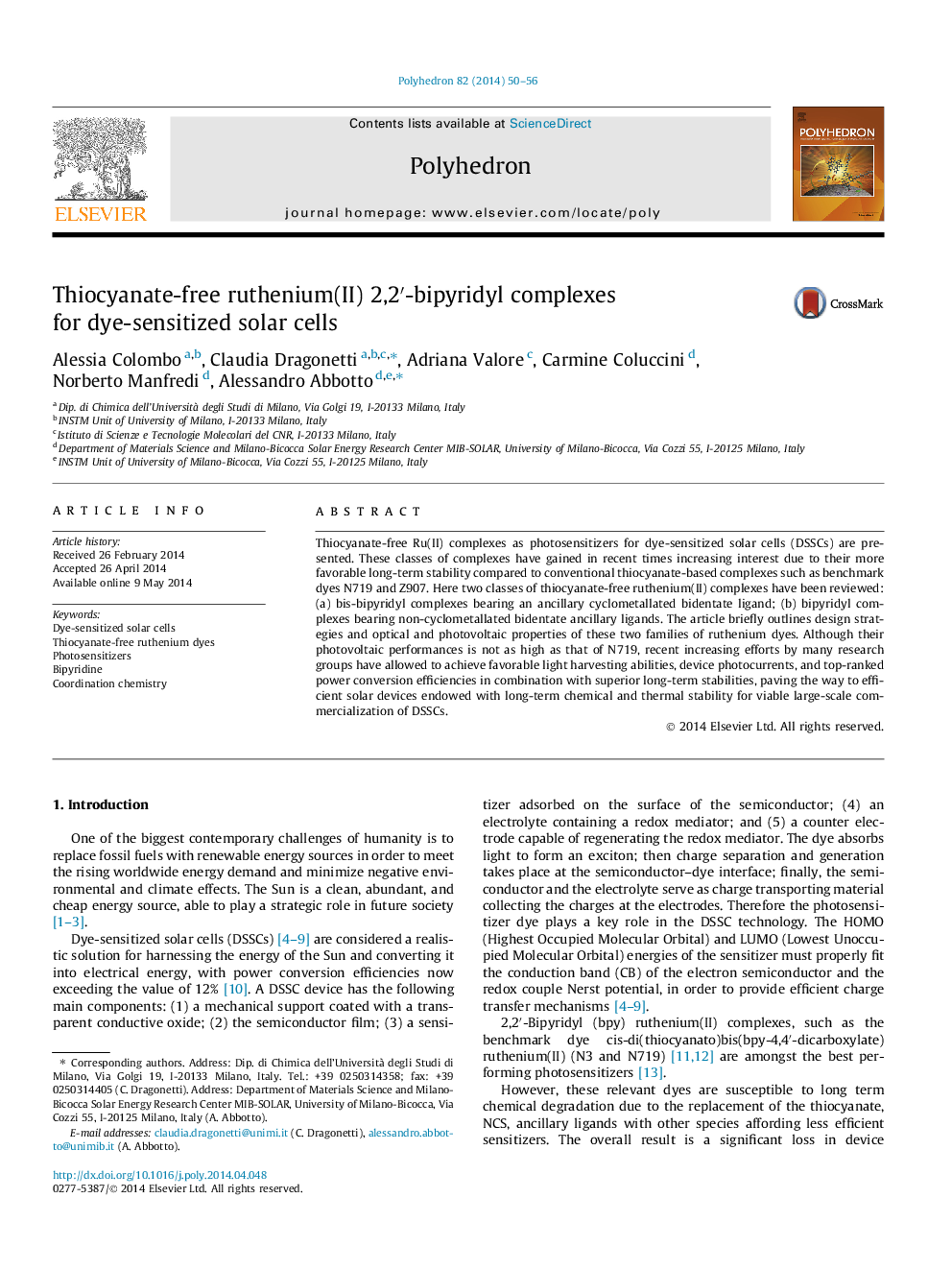| Article ID | Journal | Published Year | Pages | File Type |
|---|---|---|---|---|
| 1336438 | Polyhedron | 2014 | 7 Pages |
Thiocyanate-free Ru(II) complexes as photosensitizers for dye-sensitized solar cells (DSSCs) are presented. These classes of complexes have gained in recent times increasing interest due to their more favorable long-term stability compared to conventional thiocyanate-based complexes such as benchmark dyes N719 and Z907. Here two classes of thiocyanate-free ruthenium(II) complexes have been reviewed: (a) bis-bipyridyl complexes bearing an ancillary cyclometallated bidentate ligand; (b) bipyridyl complexes bearing non-cyclometallated bidentate ancillary ligands. The article briefly outlines design strategies and optical and photovoltaic properties of these two families of ruthenium dyes. Although their photovoltaic performances is not as high as that of N719, recent increasing efforts by many research groups have allowed to achieve favorable light harvesting abilities, device photocurrents, and top-ranked power conversion efficiencies in combination with superior long-term stabilities, paving the way to efficient solar devices endowed with long-term chemical and thermal stability for viable large-scale commercialization of DSSCs.
Graphical abstractStable thiocyanate-free Ru(II) complexes as photosensitizers for dye-sensitized solar cells (DSSCs) are presented. Two classes of thiocyanate-free ruthenium(II) complexes have been reviewed: (a) bisbipyridyl complexes bearing an ancillary cyclometallated bidentate ligand; (b) bipyridyl complexes bearing non-cyclometallated bidentate ancillary ligands.Figure optionsDownload full-size imageDownload as PowerPoint slide
